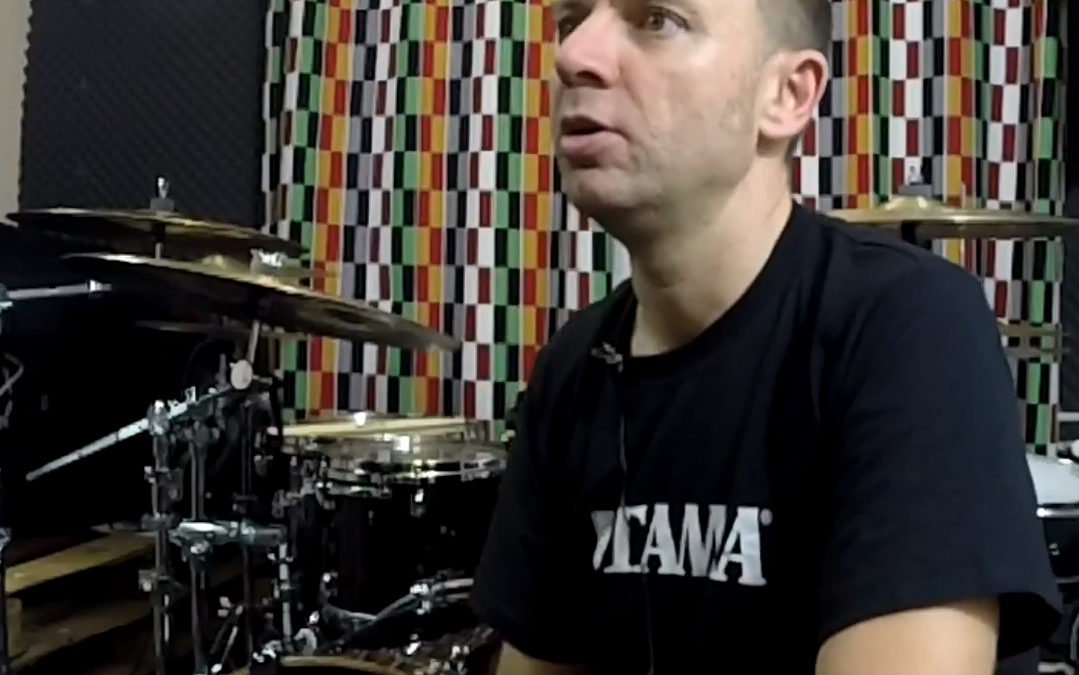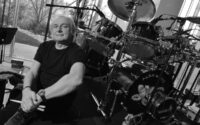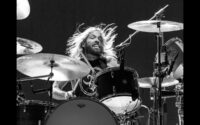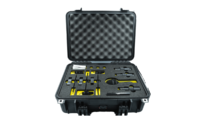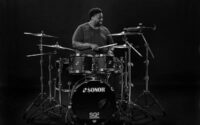Peter Szendofi is one of the most talented professional drummers, composers and most frequently employed musicians in Hungary, whose reputation as an educator crossed the Hungarian borders long ago. He teaches at Galileo University Guatemala, North Karelia University Finland and Drummers Collective, New York. He is also a member of the Drum Set Committee of Percussive Arts Society. As a musician, Peter has played on about 130 albums, and has performed with Loop Doctors (with Gary Willis and Brandon Fields), Fusio Group, Trio Ricardo, Subjective Symptom, and Eastwing Group, among others. He has also done a video for the widely popular Drumeo channel.
Peter is busy conducting drum clinics, workshops, courses and master classes all over the world. He has also visited Poland with those in mind, one of which was organized by us – www.beatit.tv. We invited him to Poznań, Poland, to do a drum clinic at the Republika Rytmu music school.
We took the opportunity to interview the man in-depth so that our viewers can also get at least a tiny bit of this great drummer’s knowledge and experience. In the first part, we talk about how he got interested in the drums, his first inspirations, and the education he took as a youth.
Peter Szendofi is is an international artist endorser for Tama Drums, Bosphorus Cymbals, Remo Drumheads, Regal Tip Sticks and Humes&Berg Cases.

Peter Szendofi talks to BeatIt, Pt. 1
BeatIt: Peter Szendofi! Welcome to BeatIt!
Peter Szendofi: Thank you.
B: Thank you for taking time to talk to us.
P. S.: My pleasure.
B: The first question is connected with what you have just finished here in Poznan, Poland, at the Republika Rytmu music school, which is your clinic. What is the most important thing you want to convey to the people who come to your clinics? Not master classes because that’s different.
P. S.: I usually try to demonstrate a couple of my most important goals, like, how to play drums for me. The first thing is to always make music on a drum set in any kind of situation and any musical style. This has to be the very first purpose. Even if you play a simple groove or solo stuff. The other thing is I try to demonstrate how to make music with an instrument which has no melodies and no chords. If I were a guitar player or a piano player, that’s easier because I would have absolute pitched notes. I would play real melodies and real chords but it’s not possible on the drum set. We do have a huge dynamic range, we can play different colours, a lot of rhythms, so we have a lot of other possibilities to make music. That’s what I usually try to communicate to the people.
B: Let’s go back to the beginnings. I know that you were a self-taught drummer on the kit initially. You studied classical music but you taught yourself to play the drum kit. What drew you to the drum kit? What or who was so attractive? I mean the inspirations and stuff.
P. S.: The very first step was when I was 14 or 15. I started playing drums relatively late because I wanted to be a painter as a kid. My grandfather was a painter and I got a lot of inspiration from his stuff. Then, I saw a drum show on the national Hungarian TV, where two Hungarian drummers did a drum battle. I was in shock. I’d never checked this kind of thing at all. I’d listened to a lot of great music because my mother is a great classical piano player and conductor and my father was an instrument maker master. I was surrounded by great music like Ray Charles, Glenn Miller and this kind of music, but I’d never tried to play drums before. Like I said, I was in shock. After a couple of days I said to my parents: „Hey, I would like to be the best drummer in the world”. They went: „Ha ha!”. They thought it was a fad and I would grow out of it. After that, I started to play on anything I could get my hands on, so my mother decided to take me to one of her colleagues who was a great drummer and an amazing teacher. I started to take private lessons from him and I’m really thankful to that guy because I could see he was practicing every day. He was strict but also a great teacher. He would show me interesting stuff too, not only the old exercises on paper. Then, my parents said the best way to follow that would be to learn classical first. I went to a classical conservatory. At the time, there was no drum set department there. First, I started to do transcriptions from Billy Cobham, Dave Weckl and Dennis Chambers, and I would figure out how those guys play their things. This was in the mid 80s. There was no instructional videos, nothing. Only cassette tapes and one radio channel with a jazz show. I recorded some Mahavishnu, Return To Forever and Chick Corea with Steve Gadd from there. So I would do transcriptions and try to figure it out. Then, I went to the Academy of Music in Budapest, which already had a jazz department. I graduated in 1992 and a couple of years later I sent an application to the Drummers’ Collective school because I knew a guy who spent a couple of months there. This was the place where they recorded the Steve Gadd video, the Omar Hakim video, etc. They have a great drum school, too. I sent my materials and they said I was the most gifted applicant that semester, so I got a full scholarship from the school. I went to New York in 1995. That’s what my beginnings were like.
B: The earliest heroes of yours were: Cobham, Weckl, Gadd, Lenny White. Those were guys you hadn’t met yet. You were just listening to cassette tapes.
P. S.: I hadn’t even seen those guys.
B: Then, you went to Drummers’ Collective and started meeting those guys.
P. S.: In the school, I had the chance to meet Dave Weckl, Steve Gadd, Peter Erskine, Freddie Gruber. I couldn’t believe it. Those guys were human, they were there and they were real. That wasn’t a kind of film or video. Those guys were there!
Drummers and Drummerettes! Here is Peter Szendofi in the first part of an exclusive interview for www.beatit.tv!
Share

